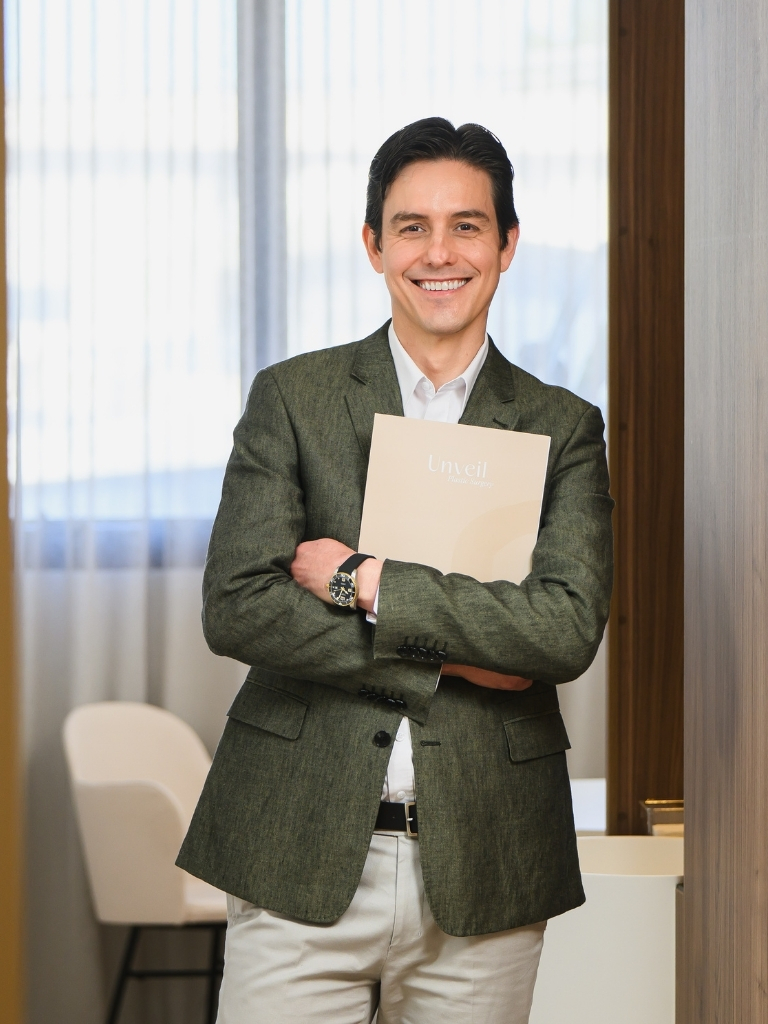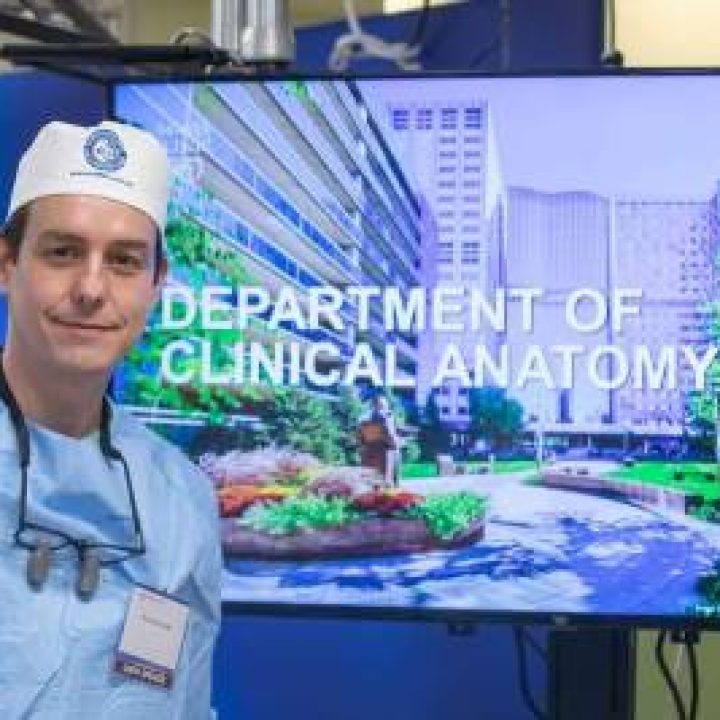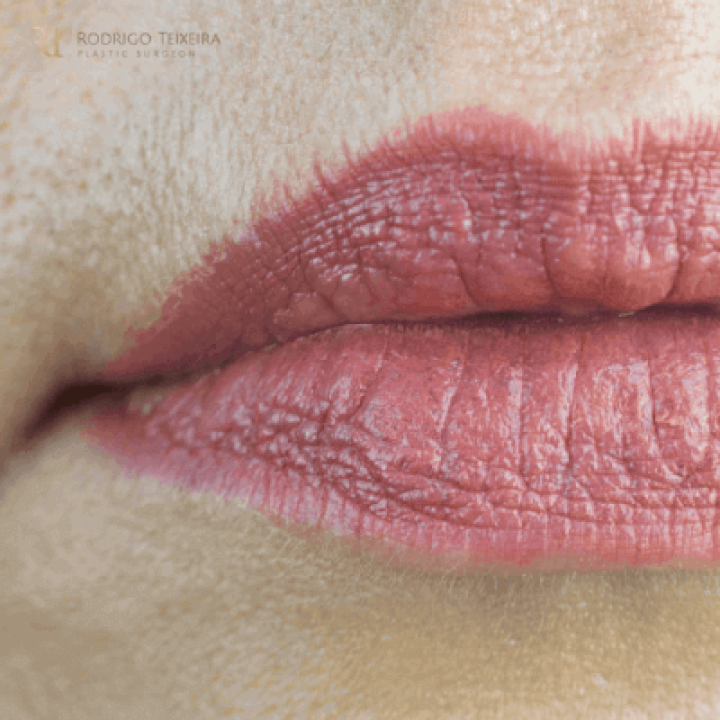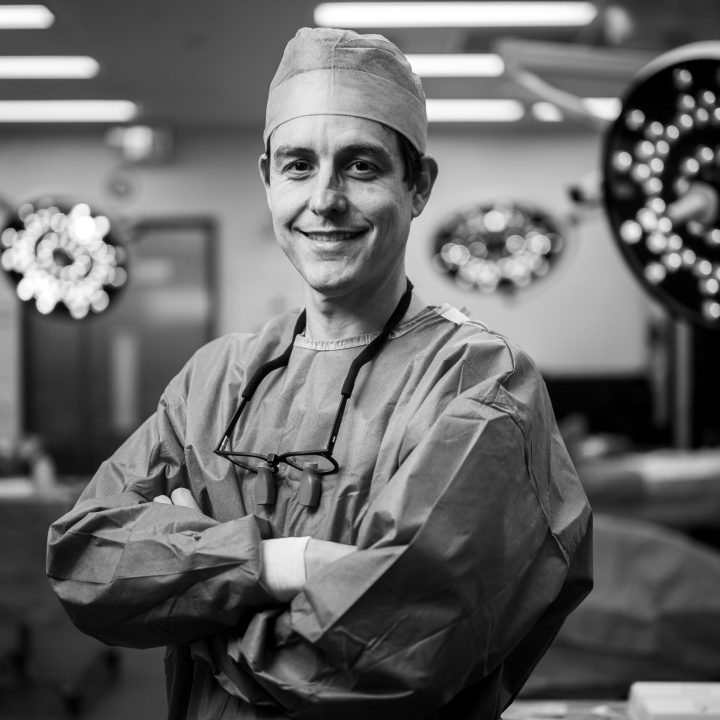Facial Surgery Melbourne
Dr Rodrigo Teixeira (FRACS) is a Specialist Plastic Surgeon in Melbourne focusing on facial plastic surgery. Facial surgery refines structure, contour, and proportion, addressing changes from ageing, genetics, or prior surgery, with procedures tailored for balanced aesthetic refinement and natural facial harmony.
A Personalised Approach to Facial Surgery
Dr Rodrigo Teixeira (FRACS) is a Specialist Plastic Surgeon with experience in facial aesthetic and reconstructive surgery. His approach is based on understanding of facial anatomy and ageing patterns, combining evidence-based techniques with a calm, patient-centred philosophy.
Facial ageing is a multilayered process affecting the skin, muscles, ligaments, fat, and bone at different rates. Not everyone ages the same way, and regions such as the brow, midface, jawline, and neck change differently over time. These changes are influenced by genetics, general health, lifestyle, and environmental exposure, which all affect the rate and pattern of tissue descent, support, and volume loss.
Each surgical plan is tailored to the individual, focusing on restoring structure, re-establishing support, and redistributing volume while maintaining natural expression and facial harmony. As a faculty member of the Mendelson Advanced Facial Anatomy Course (MAFAC), Dr Teixeira continues to teach, learn and apply current, anatomy-based surgical principles in his practice.
Understanding Facial Anatomy, Ageing, and Individual Variation
Facial ageing is a progressive, anatomical process that affects each layer of the face differently. The skin loses elasticity, fat compartments shift or deflate, and supporting ligaments and bone structure remodel over time, altering contour and proportion. These changes follow a pendular pattern rather than a purely downward descent, and understanding these natural vectors allows surgery to restore support along the face’s original structural pathways.
Not all patients seeking facial surgery have significant ageing changes. Some present with developmental or hereditary traits, such as asymmetry, disproportion, or lack of harmony between facial features, that can affect balance and overall facial aesthetics. In these cases, surgical planning focuses on enhancing structure and proportion, tailoring treatment to the individual’s anatomy and needs rather than age alone.
When Non-Surgical Treatments Are Less Effective
Non-surgical facial procedures can be appropriate for some patients, particularly those with well-supported tissues and intact facial ligaments. Over time, however, repeated treatments and changes in tissue quality may alter how these products behave. Even when results appear to fade after 12–18 months, some material may remain within the tissues, potentially contributing to swelling, migration, or uneven texture.
As tissue integrity declines, larger or more frequent treatments may be required to maintain effect, which can eventually produce a puffy or ‘overfilled’ appearance and alter facial balance. Some patients seek surgical consultation only after these changes develop, which may make correction more complex. Prescription-only injectable treatments are discussed privately during consultation, in accordance with TGA guidelines.
Facelift (Meloplasty or Rhytidectomy)
A facelift repositions the facial tissues to restore support, contour, and definition affected by ageing or structural descent. Dr Teixeira performs several facelift techniques, including deep-plane, SMAS, and short-scar approaches, selected according to facial anatomy, tissue quality, degree of laxity, and patient’s goals.
These procedures can address different areas of the face, refining contour while maintaining natural expression and harmony. By working on the supportive tissue layers beneath the skin, rather than tightening the skin alone, the surgery restores the facial structure, support, and proportion for long-term balance.
Learn more about Facelift Surgery
Neck Lift (Cervicoplasty or Neck Rhytidectomy)
A neck lift addresses concerns such as submental fullness, central neck heaviness, or a poorly defined cervico-mental angle. These changes may result from ageing, hereditary traits, or structural factors such as an underdeveloped chin or jawline, which can make the neck floor and submandibular region appear fuller. The procedure targets the platysma muscle, subcutaneous fat, and occasionally the submandibular glands, which may contribute to contour irregularities.
Surgery involves tightening the platysma, refining the jawline and chin–neck transition, and removing or repositioning excess tissue for improved definition. A midline platysmaplasty, neck corset, may be performed through a small incision under the chin, while a lateral neck lift can be added to address tissue laxity extending toward the jawline. Combining a neck lift with a facelift allows comprehensive treatment of both the lower face, central and lateral neck when indicated.
Brow Lift (Browplasty Surgery)
A brow lift elevates and repositions the eyebrows and forehead tissues to address heaviness, descent, or asymmetry that may affect the upper third of the face. These changes can be age-related or influenced by genetic and structural factors, such as low-set brows or differences in frontal bone projection.
Over time, activity of the frontalis and orbicularis oculi muscles contributes to forehead wrinkles and downward brow movement, which can accentuate upper eyelid hooding.
Dr Teixeira performs several brow lift techniques, including endoscopic, lateral temporal, pretrichial (hairline), and direct approaches, selected according to the degree of descent, forehead height, and hairline position. Each method repositions the brow-eyelid complex along natural anatomical vectors to restore balance and maintain normal facial expression. A brow lift is often combined with blepharoplasty or facelift surgery for complete facial harmony.
Learn more about Brow Lift Surgery.
Blepharoplasty (Eyelid Surgery)
Blepharoplasty refines the upper and lower eyelids by addressing skin excess, muscle laxity, and orbital fat prolapse that can obscure the natural crease or create puffiness. These changes may result from ageing, hereditary anatomy, or functional concerns, including heaviness that affects eyelid position.
Surgery involves careful removal or repositioning of skin, orbicularis oculi muscle, and fat pads, restoring definition while preserving eyelid function and support.
- Upper blepharoplasty enhances the eyelid fold and tarsal platform, improving contour between the lashes and brow.
- Lower blepharoplasty smooths the tear trough and lower eyelid-cheek junction, addressing hollowing or prominent fat pads.
When performed with a brow lift or facelift, it can enhance harmony across the periorbital and midface regions. All techniques aim to maintain structural integrity, natural expression, and periorbital balance.
Learn more about Blepharoplasty
Rhinoplasty (Nose Reshaping Surgery)
Rhinoplasty involves reshaping or reconstructing the nose to improve structure, function, and facial balance. The procedure may address concerns such as tip projection, dorsal contour, nasal width, or deviation, while maintaining harmony with surrounding features. Depending on the goals, rhinoplasty can refine proportions, correct structural irregularities, or improve breathing through functional rhinoplasty.
Dr Teixeira performs both primary and revision rhinoplasty, using open structural techniques to adjust the cartilage, septum, and nasal bones with stability and contour refinement. When required, surgery may include septoplasty or other methods to improve nasal airflow and breathing. Each plan is carefully developed to respect the patient’s anatomy, ensuring outcomes that support both aesthetic refinement and nasal function.
Learn more about Rhinoplasty.
Facial Fat Transfer (Autologous Fat Grafting)
Facial fat transfer uses a patient’s own adipose tissue to restore volume, contour, and support in areas affected by ageing or structural imbalance. Fat is gently harvested from donor sites such as the abdomen or thighs, processed, and re-injected using precise microdroplet techniques into targeted fat compartments of the cheeks, temples, jawline, or tear trough region.
Beyond volume replacement, autologous fat contains regenerative cellular components that may support tissue quality and elasticity. This technique can be performed alone or combined with other procedures such as facelift, brow lift, or lip lift to achieve balanced facial proportion and definition. Dr Teixeira’s approach focuses on volume loss patterns and even distribution to maintain natural transitions, and long-term volume replacement.
Lip Lift
A lip lift shortens the philtrum (the distance between the nose and the upper lip) to enhance lip proportion, contour, and definition. This procedure is suitable for patients with elongation of the upper lip, reduced upper incisor show, or a desire for improved Cupid’s bow shape. By elevating the lip’s position, the surgery restores youthful balance between the white lip and the vermilion border, refining the transition between the mouth and surrounding features.
Incisions are placed at the base of the nose, following the natural curvature of the nostrils for subtle scar concealment.
In some patients, changes in the nasal base or columella may also be addressed for symmetry. A lip lift may be performed alone or combined with facelift, rhinoplasty, or facial fat transfer to enhance overall perioral harmony.
Learn more about Lip Lift Surgery.
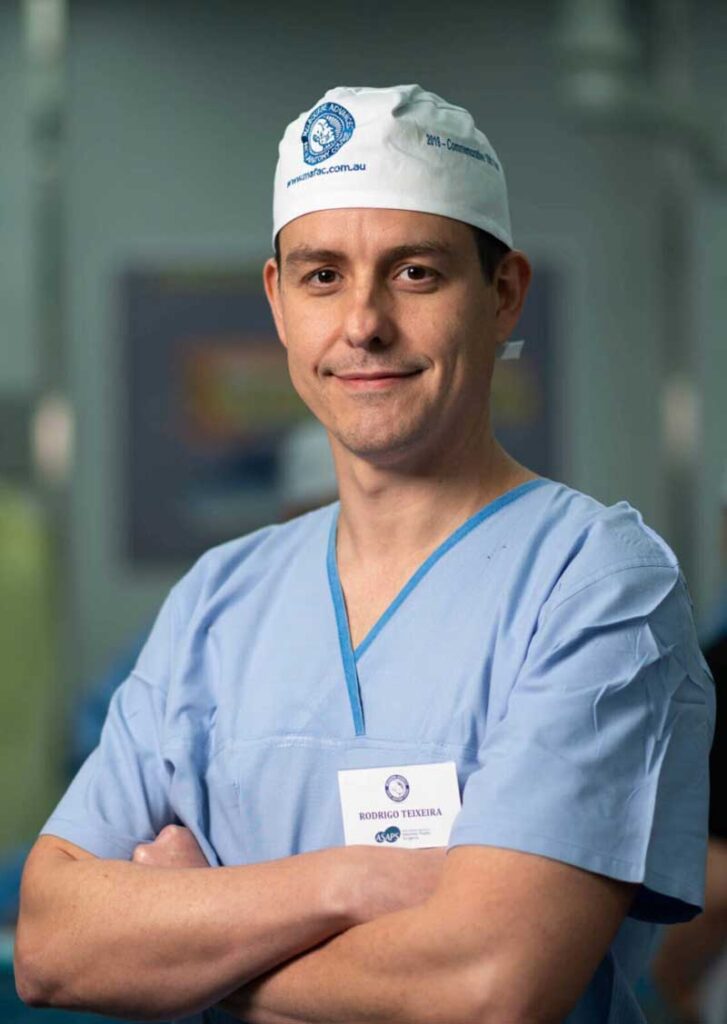
Risks and Considerations of Facial Surgery
Before undergoing any facial procedure, it is important to consider your motivations, expectations, and readiness for surgery. Facial surgery can address anatomical or aesthetic concerns, but it cannot change personality or identity, and results vary between individuals. Dr Teixeira encourages open discussion about your goals to ensure that any treatment is clinically appropriate and aligned with your goals.
All surgical procedures carry some degree of risk. Healing and recovery differ between patients and are influenced by anatomy, age, health, and skin quality. Temporary effects such as bruising, swelling, or asymmetry are common in the early stages of healing. Detailed information about risks, recovery, and possible complications is available on each procedure page and discussed thoroughly during consultation.
In accordance with AHPRA and the Medical Board of Australia guidelines for cosmetic surgery, patients must:
- Obtain a referral from a general practitioner (GP) before consultation.
- Attend two pre-surgical consultations, one of which must be in person with the operating surgeon.
- Complete screening for psychological conditions, such as Body Dysmorphic Disorder (BDD), when appropriate.
- Observe a minimum seven-day cooling-off period after the second consultation before surgery can be scheduled.
Dr Teixeira’s approach prioritises patient safety, realistic expectations, and informed decision-making at every stage of care.
Surgery and Recovery
Recovery after facial surgery varies for every individual and depends on the type of procedure, overall health, and natural healing response. Swelling, bruising, and a sense of tightness are common early on and usually improve over the first few weeks. Each patient receives written post-operative instructions outlining wound care, medication use, and activity guidelines to support safe and steady healing.
Follow-up care is coordinated by Dr Teixeira and his clinical team, with his direct supervision. Appointments are scheduled to monitor progress, review incision healing, and provide advice on returning to normal activity. Patients receive direct contact details for postoperative assistance, ensuring timely communication and ongoing support throughout recovery.
Optional recovery and advanced scar management treatments are available at Unveil Aesthetics, which offers professional care to complement surgical recovery. Healing time and results differ between patients and procedure specific recovery is discussed in detail during consultation.
Final improvements emerge gradually as swelling resolves and tissues settle.
About Dr Rodrigo Teixeira
Dr Rodrigo Teixeira (FRACS) is a Specialist Plastic Surgeon (AHPRA MED0001650480) based in Melbourne. His practice focuses on facial plastic surgery, including rhinoplasty, facelift, and blepharoplasty, with a balanced approach to aesthetic refinements and function. Dr Teixeira completed advanced fellowship training in Aesthetic Plastic Surgery, Craniofacial and Cleft Surgery, and Burns, bringing broad expertise to both reconstructive and aesthetic surgery.
In addition to private practice, Dr Teixeira is a faculty member of the Mendelson Advanced Facial Anatomy Course (MAFAC), where he teaches facial anatomy and surgical technique to surgeons worldwide. He is a Fellow of the Royal Australasian College of Surgeons (RACS) and an active member of the Australian Society of Plastic Surgeons (ASPS), the Australasian Society of Aesthetic Plastic Surgeons (ASAPS), and international professional associations.
Learn more about Dr Rodrigo Teixeira and his qualifications.
Facial Surgery FAQs
Suitability is assessed on an individual basis. Some patients seek facial surgery to address ageing-related changes, while others have hereditary or developmental traits that affect facial harmony. A consultation allows for a detailed assessment of your anatomy, concerns, and goals.
A GP referral is required before booking any cosmetic surgery. Patients must attend two consultations (one in person with the operating surgeon), undergo screening for psychological readiness if indicated, and observe a minimum seven-day cooling-off period.
Yes, if clinically appropriate. Procedures may be combined, for example, a facelift with a neck lift or eyelid surgery, to address related concerns. This is planned carefully to match your anatomy, goals, and overall safety.
Recovery differs depending on the procedure and individual healing factors. Swelling and bruising are expected in the early phase and improve gradually. Tissues continue to settle over several months. Detailed aftercare instructions and follow-up are provided.
All surgery carries risks. These may include swelling, bruising, temporary changes in sensation or asymmetry, and other procedure-specific considerations. These will be discussed in your consultation and outlined on each relevant service page.
Non-surgical treatments may improve skin quality or refine contour in selected cases. However, they do not reposition deeper tissue layers. Your treatment plan will consider all appropriate options based on your goals and clinical assessment.
